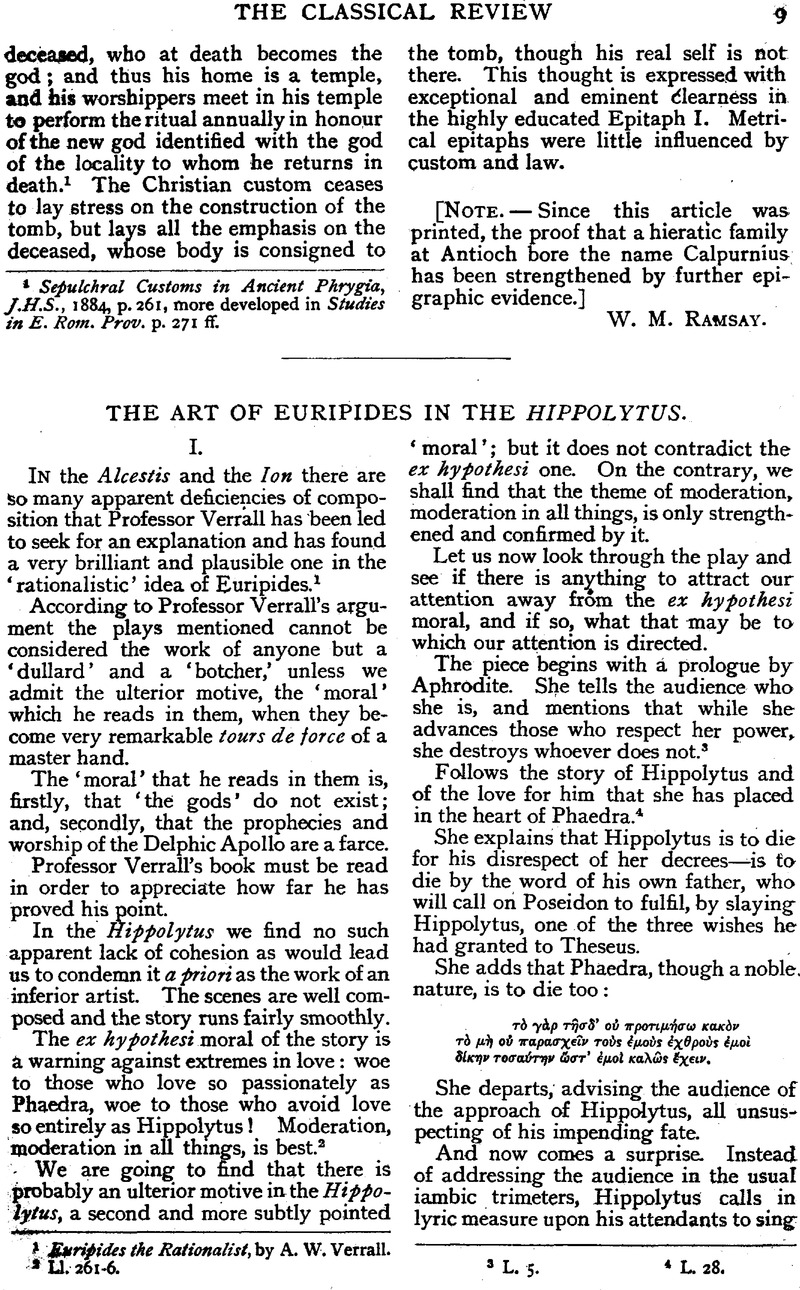Article contents
The Art of Euripides in the Hippolytus
Published online by Cambridge University Press: 27 October 2009
Abstract

- Type
- Original Contributions
- Information
- Copyright
- Copyright © The Classical Association 1919
References
page 9 note 1 Euripides the Rationalist, by A. W. Verrall.
page 9 note 2 LI. 261–6.
page 9 note 3 L. 5.
page 9 note 4 L. 28.
page 10 note 1 LI. 61–72.
page 10 note 2 L. 113: ![]() .
.
page 11 note 1 LI. 887–898 and 1041 ff.
page 12 note 1 Hippolytus,  .
.
page 12 note 2 Fragm. 436 (Nauck). If we read σθ⋯νειν for σ⋯βειν with Gomperz, it does not perceptibly alter the sense. The preceding context may have accounted for some apparently missing word.
page 12 note 3 Fragm. 440.
page 12 note 4 Fragm. 442. The text given follows that quoted by Stobaeus.
page 12 note 5 Fragm. 448.
page 13 note 1 Aristophanes, Frogs, 11. 102 and 1471, etc.
page 13 note 2 Aristotle, Rhet. III. 15.
page 13 note 3 LI. 786–7.
page 13 note 4 LI. 88–9
page 14 note 1 Paul Decharme, Euripide et l' Esprit de son Théâtre, p. 101: ‘Cette obligation (du serment) passait jadis pour si forte qu'elle enchaînait, disait-on, les dieux eux-mêmes.’ He quotes Theog. 793 in support, but overlooks the Poseidon episode in the Hippolytus.
page 14 note 2 Cf. Eur. I.A. 394: ![]() .
.
- 1
- Cited by


